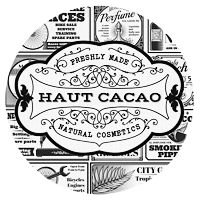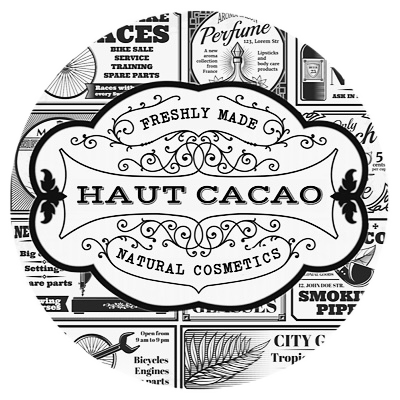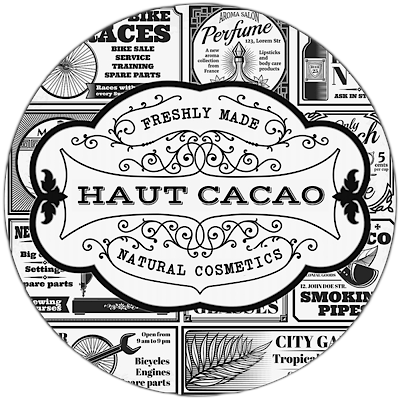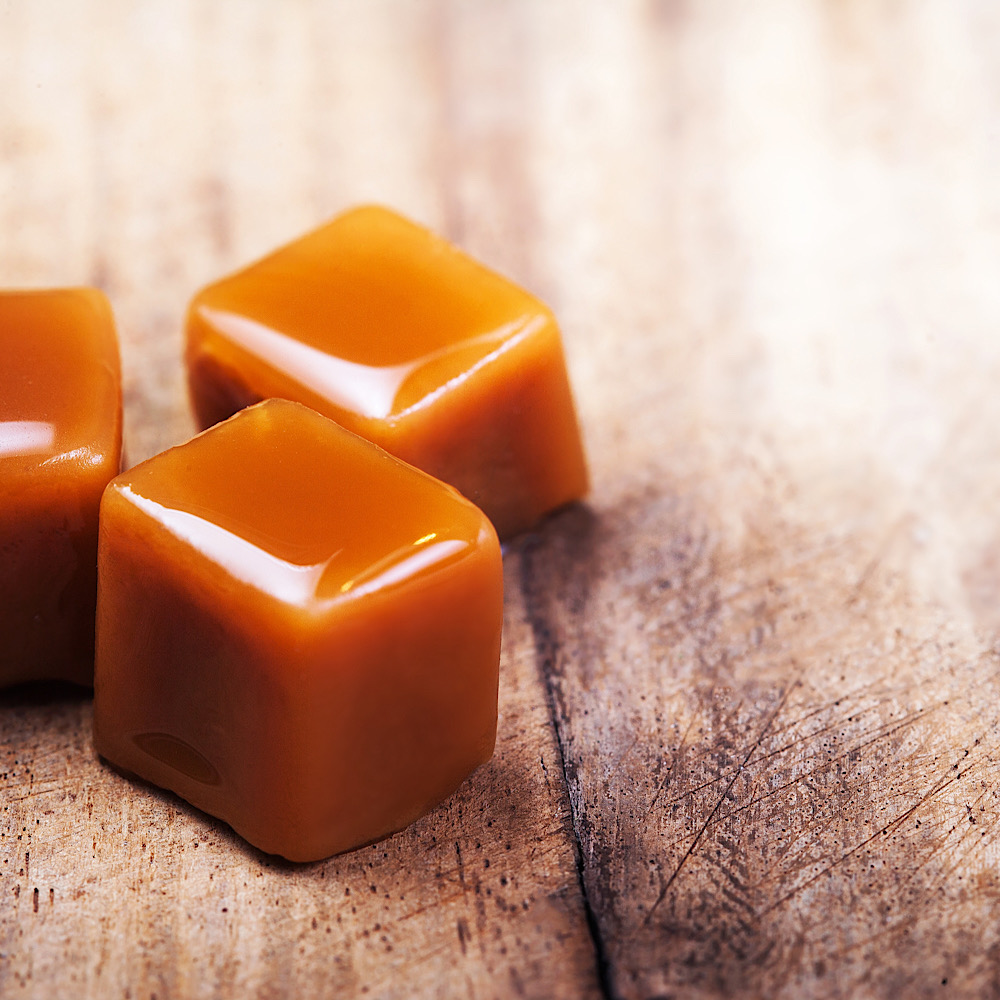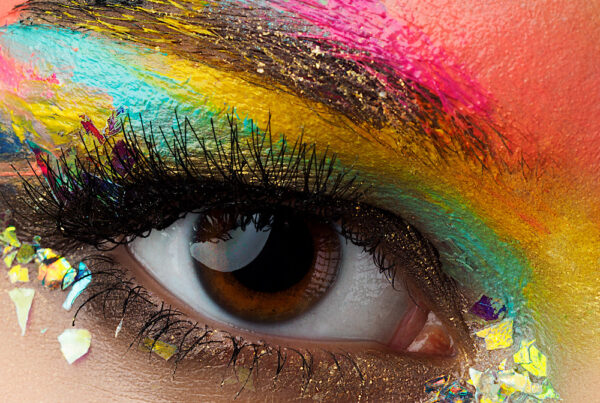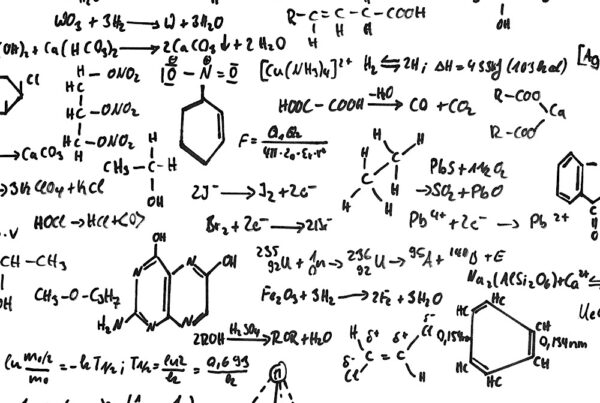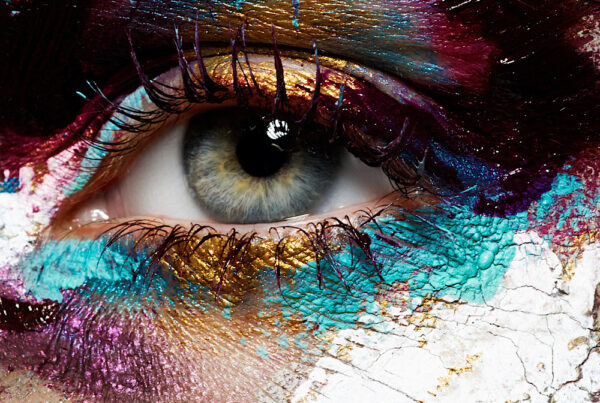It sounds innocent enough right – like butterscotch or cacao. Sadly, this could not be further from the truth. I have mentioned caramel colouring along with petroleum-based dyes in previous posts but being that my #1 selling product is called caramel tan, I wanted to be crystal clear on the fact that I do not use caramel colouring, nor do I use petroleum dyes. I often see caramel colouring in place of the dyes now so I wanted to share some more information on this ingredient. Caramel colouring used to be natural, but the natural form was too expensive to make in large quantities. Now caramel colouring is anything but natural.
sugar + sulfuric acid + ammonia = caramel colouring
Not only is it used to colour us like easter eggs via self-tanning products, it is used to colour the foods we eat. Caramel colouring is not a synthetic food dye in the strictest sense but seeing it listed as an ingredient should still give you pause. The caramel colouring found in select sodas, baked goods, chocolate items, candies, and protein bars is made by treating sugar with ammonia and sulfuric acid. Needless to say, this can have a carcinogenic effect on those who consume it. When we apply it to our skin, it is absorbed directly into our blood stream. Caramel colouring is linked to cancer in animals, and the state of California requires cancer warning labels on products with more than 30 micrograms of caramel colouring in a day. In addition to that, caramel colouring can be sourced from lactose, barley, or wheat so it is not vegan, nor is it gluten-free and may not be gmo-free. North American and European caramel coloring are derived from wheat or corn and highly-processed at crazy high temperatures..
negative impact on immune function
Caramel colouring is not only a cause for concern about its carcinogenicity, but it has also been pointed out that it may have a negative effect on immune function . In particular, Caramel, which uses ammonia compounds, can inhibit the function of vitamin B6 and cause lymphopenia . This can weaken our immune system and cause various health problems. As if causing cancer isn’t already bad enough, caramel coloring can also increase blood pressure, decrease your body’s amount of white blood cells, and potentially cause severe allergic reactions to gluten sensitive individuals. Caramel coloring has absolutely zero nutritional value, and can pose a wide range of serious side effects. It is unfortunate that millions are consuming this toxic byproduct, though its only use is for aesthetics. If you haven’t already begun to check your food / drink labels, you may want to do so. It is in your best interest to avoid this food additive.
a warning to humans + their pets
Certain ingredients used in making caramel coloring can cause reactions if you have an allergy to them or have celiac disease or gluten intolerance. Some of these include milk, corn dextrose, corn or wheat starch, and malt syrup derived from barley. However, these ingredients aren’t always indicated individually on the product labeling. we need to think about our pets too. No, they don’t use sunless tanning products, but because this same ingredient is used by itself or along with petroleum dyes in pet food, it is so important to read the ingredients of your own food, your skincare and makeup, and your pet food and pet treats. Some products will use ‘dye-free’ in their marketing and yet caramel colouring is still present so please be cautious. Blue 2, Red 40, and Yellow 5 and 6 have been documented to contribute to hypersensitivity (allergic-type) reactions, behavioural problems, and cancer in humans. When it comes down to it, artificially colouring food only appeals to humans and not pets.
beware of innocent + natural-sounding ingredient names
who would think that a plant wax could be irritating and not 100% natural? I stopped using plant waxes when I learned that, just like caramel colouring, they were processed with sulfuric acid at really high temperatures. Plant waxes are used to coat fruits and vegetables, as well as being a main ingredient in cream makeup products and skincare. And just like plant waxes are used in massive amounts in makeup, in tanning solutions, caramel colouring and petroleum dyes are added in undiluted, massive amounts. If the dyes are strong enough to immediately change the colour of your skin, the amounts are potent. If your tanning product has a dark colour to it, that means dyes or caramel, or both are present. This goes for the faux freckle products too. Safe alternatives abound but they are rarely used because they are not as cheap. Dyes are now being listed under new names (as opposed to red 40 and blue 1 so I will give you a break down of the various alternative names:
Red 3
Red 3, also known as Erythrosine, is one of the most commonly used food colorings. Its signature cherry-pink is found in maraschino cherries, various candies, baked goods, and sausage casings. Derived from coal tar and flourone and sourcing some of its trademark red from cochineal beetles, red 3 has been linked to hyperactivity in children, thyroid tumors, breast cancer, and can damage liver DNA. Since its introduction as one of the 7 approved synthetic colors listed in the Pure Food and Drug Act of 1906, there have been numerous attempts to ban Red 3 from food due to its health risks. Although erythrosine has been banned in cosmetics and topical drugs in the United States since 1990, industry pressure has succeeded in keeping it as an option for coloring food.
Red 40
Touted as an alternative to Red 3, Red 40 is also known as Allura Red or Food Red 17. It is a dark red powder made from petroleum and can contain aluminum, other heavy metals, and cochineal beetles (a common ingredient in red dyes). The most commonly used synthetic food coloring in the United States, it can be found in fruit cocktail, candy, salad dressing, chocolate cake, cereal, beverages, pastries, maraschino cherries, fruit snacks, and many over the counter pharmaceuticals. Products containing the dye are treated differently in Europe, with a required label warning that Allura Red “may have an adverse effect on activity and attention in children.” Children experiencing drastic behavioral changes is one of the biggest health concerns associated with Red 40. Other reported side effects include migraines, jitteriness, inability to concentrate, and upset stomach.
Yellow 5
One of the most controversial of the synthetic food dyes, Yellow 5 or Tartrazine is the low cost, coal tar derived food dye version of beta-carotene. It has been linked to multiple health conditions like hyperactivity in children, severe allergic reactions and rashes, nausea, headaches, and asthma, among others. This connection has led to Yellow 5 being banned in Norway and Austria, while the U.K. government asked companies to voluntarily remove it from their products. This has not stopped the dye from being added to a wide range of consumables in the U.S., like cereals, puddings, frozen desserts, bread and cake mixes, condiments, beverages, chips, snacks, medications, and pet foods.
Yellow 6
Though it is primarily labeled as Yellow 6 in the U.S., this dye actually provides an orange color. Some of its other names include Sunset Yellow, Monoazo, and Orange Yellow S. This dye is banned in Norway, Finland, and Sweden and required to be labeled in the E.U. It’s been linked to adrenal and kidney cancer, diarrhea, vomiting, swelling of the skin, migraines, and worsening of asthma symptoms. The signature yellow-orange of the dye has found its way into foods like boxed macaroni and cheese, chips, bakery goods, cereals, beverages, dessert powders, candies, gelatin desserts, sausage, and some pharmaceuticals drugs. For those who normally avoid foods that come in boxes and bags, Yellow 6 can also be found in preserved fruits, so check labels carefully.
Blue 1
Blue 1, or Brilliant Blue, is the more commonly used of the two blue food dyes approved for use in the U.S. and frequently partners with Tartrazine (Yellow 5) for artificially colored green items. Like many of the other synthetic dyes, Blue 1 was originally derived from coal tar, although now it’s oil based. Brilliant blue foodstuffs like candies, ice cream, liquors, and others are easily spotted, although canned peas, soup packets, and mouthwashes also contain the color. Blue 1 is not as controversial as some of the other synthetic food dyes, but it has been suggested that it causes kidney tumors in mice and hypersensitivity reactions.
Blue 2
Blue 2 is also known as Indigotine, Indigotin, or Indigo Carmine. Most of those names reference Blue 2’s origins as a synthetic version of actual, plant-based textile dye (and color of the rainbow), indigo. The synthetic form of indigo is derived from coal tar or petroleum. In addition to coloring blue jeans, the twenty thousand tons of Blue 2 produced every year can be found in colored beverages, candies, pet food, and pharmaceuticals. It’s linked to brain tumors in male rats, asthma, skin rashes, and mild to severe allergic reactions. Blue 2 is also used to highlight issues in the urinary tract, coloring urine blue and making leaks apparent. This practice has seen dangerous blood pressure increases in some people. Indigo Carmine has been banned as a food dye in Norway, Belgium, Australia, Sweden, Switzerland, France, Germany and Great Britain.
